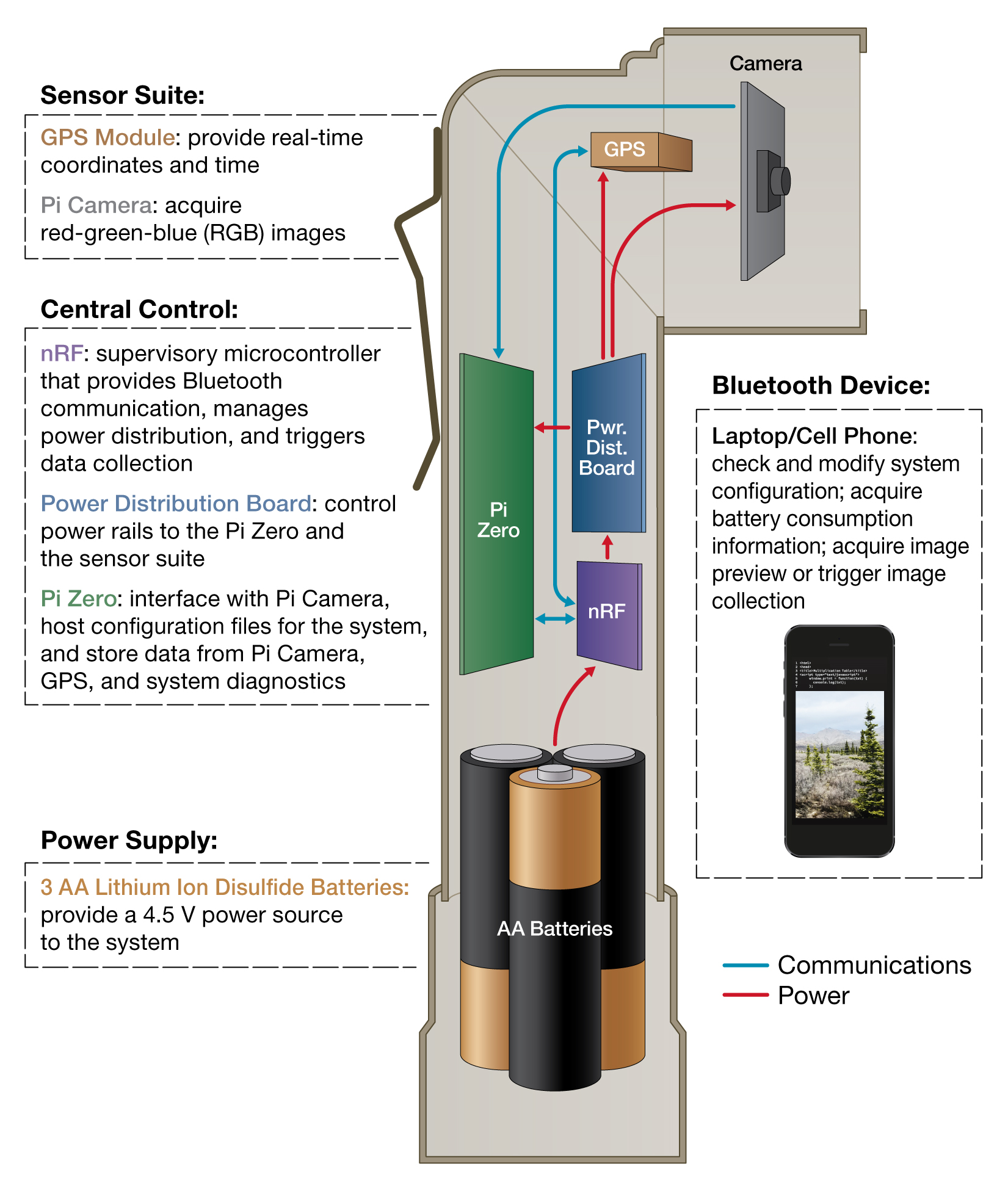October 26, 2023
A Time-Lapse View of Arctic Plants: Small Sensors Enable Researchers to Study Tundra Seasonality Beyond Warmer Summers
A Raspberry Pi-based open-source, low-power camera system improves monitoring of plant seasonality in Arctic environments.

The study developed the power-interval camera automation module (PiCAM) to monitor plant seasonality in remote environments like the Arctic.
[Reprinted under a Creative Commons Attribution 4.0 International License (CC BY 4.0) from Yang, D., et al. "PiCAM: A Raspberry Pi-Based Open-Source, Low-Power Camera System for Monitoring Plant Phenology in Arctic Environments." Methods in Ecology and Evolution 14 (12), 2974–84 (2023). DOI:10.1111/2041-210x.14231.]
The Science
The timing of plant seasonal growth plays an important role in determining annual ecosystem carbon, water, and energy fluxes. However, scientists have had limited options available to accurately characterize plant phenology in the remote Arctic where extreme environments pose serious challenges to the long-term unattended operation of scientific equipment. To address this problem, a team of researchers designed a rugged, low-power camera system (called “PiCAM”) to autonomously collect image observations of plant seasonal growth. Results show PiCAM can effectively cope with the harsh Arctic environments and remain operational for over a year, providing a new means to characterize plant seasonality across Arctic landscapes.
The Impact
This study addresses one of the biggest challenges of observing vegetation in the Arctic, providing a new capability to understand annual plant growth from species to landscapes. Analysis of PiCAM imagery showed high phenological diversity across Arctic plant species not currently represented in models used to project the fate of the Arctic. Shrub species, like Siberian alder, displayed rapid leaf expansion (completing spring growth within 2 weeks) that has not been captured by traditional field measurements or satellite remote sensing. This research highlights a critical need to characterize Arctic seasonality using on-the-ground tools like PiCAM to improve model representation of Arctic vegetation.
Summary
Time-lapse cameras have been widely used as a tool to monitor the timing of seasonal vegetation growth, or plant phenology. These simple, relatively inexpensive systems can provide high-frequency observations of plant leaf development, which are critical datasets needed to characterize plant phenology from species to landscapes. However, in remote regions including the Arctic, deploying time-lapse cameras is often challenging. The remoteness and lack of power and telecommunication infrastructure limit options for the installation, maintenance, and retrieval of data and equipment and make it difficult for cameras to survive in extreme weather (e.g., long cold winters).
A team of researchers addressed these challenges by developing a low-power, compact, lightweight time-lapse camera system called PiCAM. PiCAM was explicitly designed for simple and long-term, unattended operations without a need for external power to address challenges associated with camera survival in harsh Arctic environments. The study describes the design, setup, and technical details of PiCAM and provides a roadmap for how to build and operate these systems.
As proof of concept, the team deployed 26 PiCAMs across three low-Arctic tundra sites on the Alaskan Seward Peninsula in early August 2021. Of the 26 PiCAMs installed, 70% remained active in July 2022 when researchers retrieved the cameras, despite the extreme winter temperatures they experienced (<-30°C, heavy snow cover). The team extracted key plant phenology metrics from the PiCAMs that quantified substantial differences across key Arctic plant species. Results demonstrate the PiCAM could be widely used for monitoring plant phenology across the broader Arctic region, addressing the need for ground-based understanding of Arctic phenological diversity to better understand plant responses to climate change and validate remote sensing products.
Principal Investigator
Daryl Yang
Oak Ridge National Laboratory
yangd@ornl.gov
Co-Principal Investigator
Shawn Serbin
NASA Goddard Space Flight Center
shawn.p.serbin@nasa.gov
Program Manager
Daniel Stover
U.S. Department of Energy, Biological and Environmental Research (SC-33)
Environmental System Science
daniel.stover@science.doe.gov
Funding
This work was supported by the Next-Generation Ecosystem Experiments in the Arctic (NGEE Arctic) project, which is supported by the Biological and Environmental Research program in the U.S. Department of Energy’s Office of Science. Support was also received from NASA’s Future Investigators in NASA Earth and Space Science and Technology (FINESST) Grant 80NSSC22K1296.
References
Yang, D., et al. "PiCAM: A Raspberry Pi-Based Open-Source, Low-Power Camera System for Monitoring Plant Phenology in Arctic Environments." Methods in Ecology and Evolution 14 (12), 2974–84 (2023). https://doi.org/10.1111/2041-210x.14231.

